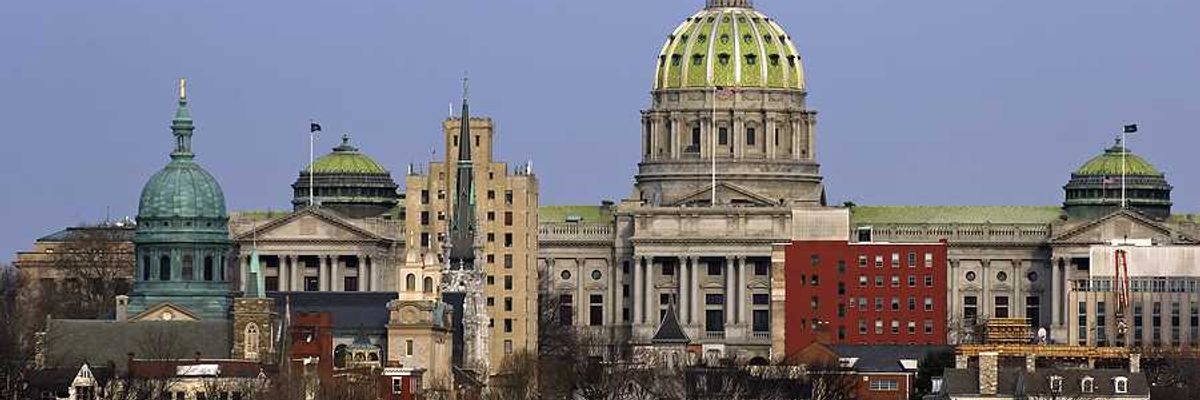migration
People are moving to risky areas despite climate dangers
Despite growing climate threats, over 300,000 Americans relocated to flood or fire-prone areas last year, driven by affordability and housing availability in states like Florida and Texas.
In short:
- A Redfin report shows that U.S. counties most vulnerable to floods and fires saw a population increase from July 2022 to July 2023, though some fire-prone areas in California saw a net outflow.
- Rising insurance costs due to increased climate-related disasters are making some areas unaffordable, prompting moves away from places like California's Ventura County.
- Despite risks, affordability and low taxes in Texas and Florida continue to attract residents to these vulnerable areas.
Key quote:
"In this new world, this new regime that we live in, maybe people are changing their behavior a bit."
— Elijah de la Campa, Redfin senior economist
Why this matters:
As climate change exacerbates extreme weather, more Americans face increased risks and financial burdens by moving to vulnerable areas. Understanding these migration patterns helps address the need for improved infrastructure and resilience planning in at-risk communities.
Hot weather poses new threat to salmon migration
Record-high temperatures in Washington state threaten the migration of sockeye salmon in the Columbia River Basin, raising concerns among fisheries managers about the future of these fish.
In short:
- A heat wave has pushed water temperatures in the Columbia River Basin above the 68-degree threshold preferred by sockeye salmon.
- The Okanogan River, a critical path for migrating sockeye, has seen temperatures near 83 degrees, risking the fish's journey to spawning grounds.
- Fisheries managers are considering interventions like trucking fish upstream to help them bypass dangerous thermal barriers.
Key quote:
“Those water temperatures are warmer than ever this year. Literally, they’re almost too warm to swim in.”
— Tom Iverson, regional coordinator for the Yakama Nation Fisheries
Why this matters:
Warmer water can severely impede salmon migration, threatening the species' survival and impacting ecosystems. Long-term climate trends could make these heatwaves more frequent, challenging conservation efforts.
Some US cities are promoting themselves as climate refuges despite concerns
Climate change is prompting some cities to market themselves as safe havens from extreme weather, but experts question their ability to truly offer protection.
In short:
- Buffalo, New York, markets itself as a "climate refuge" due to its moderate climate and low risk of extreme weather events.
- Other cities like Duluth and Ann Arbor are also positioning themselves as climate havens to attract residents fleeing harsher climates.
- Experts warn that no city is immune to climate change and stress the need for adaptation and infrastructure investment.
Key quote:
"I'm not saying climate change is going to be good for Buffalo, or Buffalo is going to be an oasis. We’re not an oasis, we suck less.”
— Stephen Vermette, professor of geography at Buffalo State University.
Why this matters:
As climate change worsens, more areas will become uninhabitable, pushing people to relocate. Marketing certain cities as climate havens could strain their resources and infrastructure, potentially leading to new challenges in those areas.
Quinault Indian Nation plans relocation to combat flooding
The Quinault Indian Nation in Washington State is relocating Taholah village to higher ground to mitigate flood risks exacerbated by climate change.
In short:
- Taholah is currently vulnerable to frequent flooding from storm surges and rising sea levels, prompting the relocation initiative.
- The new village will be situated about a half-mile uphill, incorporating sustainable and resilient building practices.
- Financial challenges remain, with projected housing costs between $350,000 and $400,000, potentially unaffordable for many tribal members.
Key quote:
"It's almost like a geyser shooting through the rocks."
— Ryan Hendricks, tribal council member, Quinault Indian Nation
Why this matters:
As the planet warms, many locations once thought ideal for settlement are becoming untenable. The Quinault Indian Nation’s decision to relocate is a reminder of the adaptability and resilience of Indigenous communities, yet it also raises important questions about the responsibility of governmental and international bodies in supporting vulnerable populations in the face of climate change.
The trickle of climate-related migration is already upon us: The Internal Displacement Monitoring Centre estimates that 1.68 million Americans were internally displaced by disasters in 2017.
Human activities are increasing pandemic risks, new study finds
A recent study highlights how human-induced environmental changes are amplifying the spread of diseases, posing potential pandemic threats.
In short:
- The research examines various environmental factors like pollution, hunting, and climate change, and their combined effects on disease proliferation.
- Key findings indicate that disruptions in biodiversity, largely due to human activities, make ecosystems more susceptible to parasites and diseases.
- The study compiles extensive data from various species and pathogens to underscore a global increase in disease risks due to environmental degradation.
Key quote:
“This adds to a very long list of reasons we should be rapidly moving away from fossil fuels and trying to mitigate the impacts of climate change.”
— Felicia Keesing, professor at Bard College, whose research focuses on biodiversity and disease risks
Why this matters:
Healthy, diverse ecosystems often act as buffers against the spread of diseases. Species-rich areas, for instance, contain a variety of hosts that can dilute the impact of pathogens. However, when biodiversity is compromised — through deforestation, pollution, and climate change — these natural checks on disease diminish, and pathogens can spread more rapidly and widely.
Australia and Tuvalu confirm climate and security agreement
Australia and Tuvalu will advance with a landmark security and climate migration pact, ensuring Tuvalu's sovereignty while addressing its environmental challenges.
In short:
- The pact, initially uncertain due to Tuvalu's elections, solidifies with the new government's endorsement.
- It aims to aid Tuvalu in disasters and military threats, ensuring sovereignty in third-party security arrangements.
- Additionally, it permits the annual migration of 280 Tuvaluans to Australia, safeguarding Tuvalu's statehood against climate-induced inundation.
Key quote:
"Australia commits to assist Tuvalu in responding to a major natural disaster, a health pandemic, or military aggression. This is predicated on Tuvalu requesting such assistance."
— Pat Conroy, Australia's Pacific Minister
Why this matters:
This climate migration pact is more than an emergency exit strategy. It embodies a deep, albeit sobering acknowledgment of the stark realities facing Tuvalu due to climate change. While the agreement facilitates a new beginning for some Tuvaluans in Australia, it also raises questions about the preservation of Tuvalu's cultural heritage and identity.
In the U.S.: Poor southerners are joining the globe’s climate migrants.
America's Great Lakes beckon as a climate sanctuary
Michigan's abundant water resources and lack of extreme weather make it an attractive destination for future climate migrants.
In short:
- The Great Lakes region, once the heart of American industry, now offers a unique "capacity" for absorbing climate migrants due to its ample water supply and mild climate risks.
- Urban planner Beth Gibbons advocates for the Great Lakes to market itself as a climate refuge, suggesting that the area's natural resources could fuel economic and population growth.
- Scientific predictions suggest that as southern regions of the U.S. face economic challenges from climate change, the northern latitudes, including the Great Lakes, could experience significant economic growth.
In short:
“There’s no future in which many, many people don’t head here,”
— Beth Gibbons, climate adaptation specialist
Why this matters:
Michigan, with its diversified economy that spans agriculture, manufacturing, and technology, could leverage its relatively stable climate to attract businesses and residents looking for a refuge from more volatile environments. Investments in infrastructure and sustainable practices could further enhance its appeal, turning the state into a model of resilience in a changing world.
Long a hotbed for the urban farming movement, Detroit is seeing a surge in urban beekeeping.









